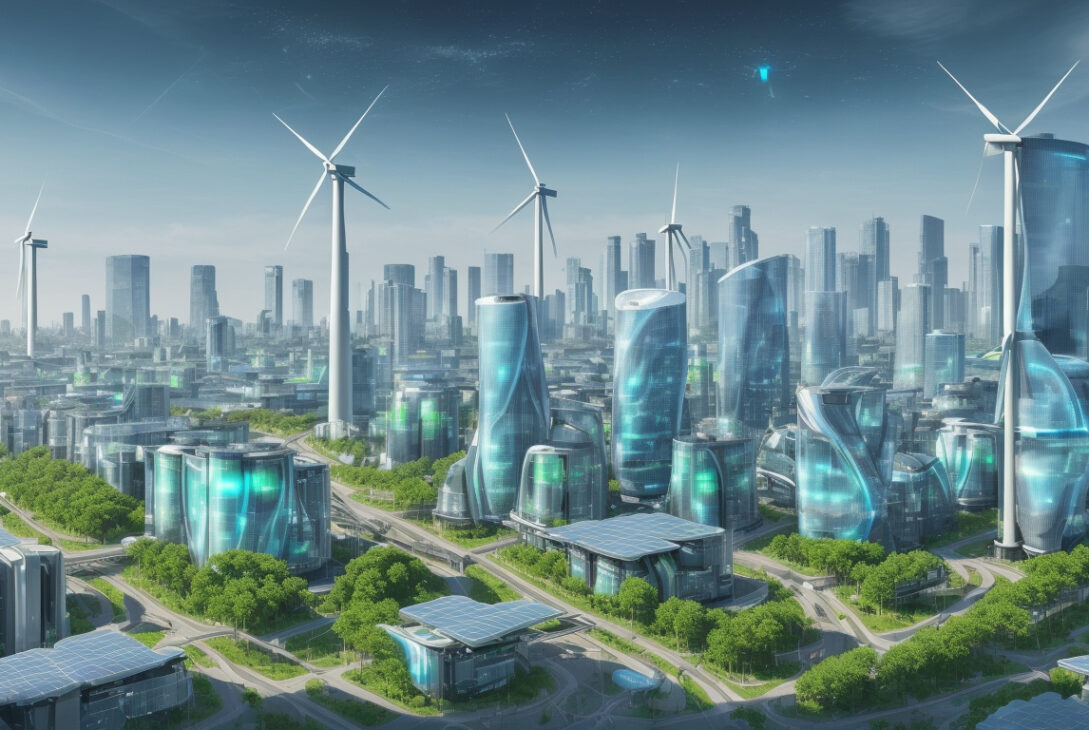Top Five Energy Technology Trends Shaping 2025, According to the World Economic Forum
September 8, 2025 — As the global energy landscape rapidly evolves, several key technology trends are taking center stage in 2025. The World Economic Forum’s Advanced Energy Solutions community has identified five dominant trends that are shaping investment and innovation in energy technology worldwide. These trends intertwine geopolitical dynamics, economic priorities, and technological advancements, underscoring a complex and fast-moving energy transition.
1. Security, Cost, and Jobs Drive Energy Technology Choices
Energy security, affordability, and industrial policies have become primary considerations in energy investments, especially for energy-importing nations. While reducing carbon emissions remains part of the equation, many countries are focusing on securing stable and cost-effective energy sources that also support job creation.
China exemplifies this approach by heavily investing in renewables, energy storage, battery manufacturing, electric vehicles, and nuclear power. These initiatives help the country reduce dependence on imported oil and gas while establishing leadership in next-generation technologies. Europe, responding to geopolitical tensions and energy supply disruptions following its reliance on Russian fossil fuels, has similarly accelerated investments in renewables and energy efficiency. In the United States, efforts to reshore critical supply chains aim to bolster domestic energy security through new policy measures despite recent policy shifts like the dismantling of the Inflation Reduction Act.
2. Ongoing Commitment to Decarbonization
Despite the growing emphasis on energy security and economic factors, decarbonization remains a top priority for policymakers and corporations alike. While some timelines for emissions reductions have become more pragmatic and sometimes extended, commitment levels remain high, including among traditional energy companies.
In addition to long-term climate goals, there is increasing attention on mitigating local pollution from energy production to maintain social license and gain public support. This shift marks a focus on near-term environmental and social impacts, highlighting a dual challenge of achieving sustainability today while planning for a net-zero future.
3. China’s Dominance in Energy Technology Investment and Manufacturing
China continues to be the preeminent global player in energy technology investment. With expenditures nearly matching the combined investments of the European Union and the United States, China channels hundreds of billions of dollars into manufacturing and deploying renewable energy, energy storage, nuclear power, and more.
China’s success is partly attributed to its effective industrial and energy policies that stimulate domestic demand and build extensive manufacturing and supply chains. The nation now controls key segments of clean energy technology supply chains, including wind turbines, solar panels, batteries, and electrolysers for hydrogen production. These advances have not only transformed China’s economy but also strengthened its influence in global geopolitics.
4. India’s Rising Role in the Global Energy Transition
India has rapidly emerged as a major energy transition leader with ambitious targets and remarkable progress. Impressively, the country achieved its goal of 40% renewable energy installed capacity nine years ahead of its 2030 deadline.
To build on this success and support domestic manufacturing under its “made in India” vision, both central and state governments have introduced incentives and mandates promoting clean energy deployment. This supportive policy environment is fostering significant opportunities in energy storage, clean hydrogen, and solar panel production.
One flagship example is the Dhirubhai Ambani Giga Energy Complex, slated to begin operations in 2026. This sprawling facility will include a gigawatt-scale manufacturing ecosystem with 10 GW of solar panel capacity, 100 GWh of battery storage, and 3 GW of hydrogen electrolyzers, making it the world’s largest such complex. The project’s scale rivals and even exceeds that of the Tesla Gigafactory, underscoring India’s determination to become a global clean energy powerhouse.
5. The Growing Energy Appetite of Artificial Intelligence
The rapid expansion of artificial intelligence (AI) technology is profoundly impacting energy consumption, particularly in data centers. According to the International Energy Agency, electricity demand from data centers is expected to more than double by 2030, reaching approximately 945 terawatt-hours—surpassing Japan’s current electricity consumption.
This surge in power demand places significant strain on electricity grids that are already facing challenges from long lead times for new transmission lines and generation equipment, such as turbines for gas-fired plants. Consequently, about 20% of planned data center projects risk delays due to limited grid capacity.
Power availability has now become the paramount factor for data center site selection, as revealed by Bloom Energy’s 2025 Data Center Power Report, even surpassing considerations like proximity to fiber optic networks. By 2030, nearly one-third of data centers are expected to operate entirely on onsite power generation, avoiding dependence on traditional grids. Notably, sustainability and carbon reduction goals remain important, with 95% of surveyed data centers affirming ongoing commitments to reduce emissions.
Advancing Collaborative Energy Solutions for a Sustainable Future
The World Economic Forum’s Centre for Energy and Materials anticipates that no single technology will suffice for the energy transition. Instead, a diverse mix of clean energy solutions—including energy storage, advanced nuclear, clean fuels, hydrogen, and carbon removal—will be essential.
The Forum’s Advanced Energy Solutions community fosters cooperation among industry leaders, innovators, energy companies, investors, and policymakers. By creating cross-industry platforms, it aims to accelerate the deployment of advanced energy technologies and reduce the timeline for global transition from decades to years.
Countries and industries are encouraged to tailor their energy strategies based on specific circumstances but must work collectively to realize a secure, just, and sustainable energy future.
Additional Resources and Initiatives
-
Clean Energy in Emerging Economies: The Forum supports finance solutions targeting renewable energy projects in India, Brazil, Nigeria, and Indonesia, including a 15 MW solar and battery initiative in East Sumba that powers 4,000 homes and cuts CO₂ emissions by 5.5 kilotonnes annually.
-
Energy Transition Index: Tracks and evaluates energy system performance across 120 countries to guide policy and business decisions.
-
Mining and Metals Blockchain: Demonstrates emissions tracking across supply chains using blockchain technology, aiding transparency and financing in clean energy projects.
-
Clean Power and Electrification: Efforts to triple global clean energy consumption by 2030 are underway.
Conclusion
As global energy investment ascends toward $2.2 trillion in 2025, according to the International Energy Agency’s World Energy Investment 2025 report, these five interconnected trends reflect the complexities and ambitions of the current energy transition. Geopolitical shifts, technological breakthroughs, and national ambitions converge to transform how energy is produced, managed, and consumed worldwide.
For more insights and to engage with the World Economic Forum’s initiatives on energy transition and advanced energy solutions, interested parties can explore their resources or join the Advanced Energy Solutions community.
This article originally appeared on the World Economic Forum website. Views expressed herein are those of the author, Maciej Kolaczkowski, and do not necessarily reflect those of the World Economic Forum.










